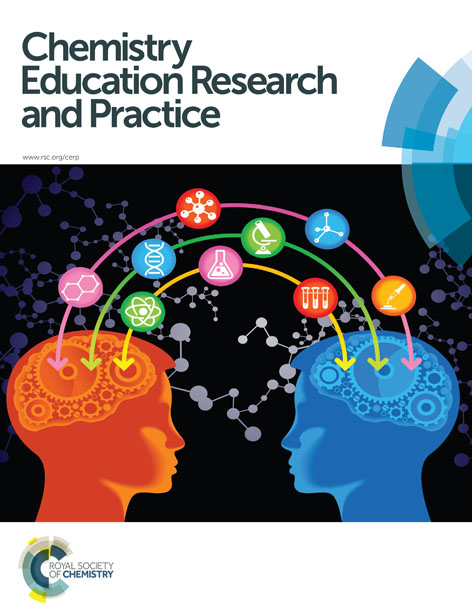Chemical engineering students' ideas of entropy
Abstract
Thermodynamics, and in particular entropy, has been found to be challenging for students, not least due to its abstract character. Comparisons with more familiar and concrete domains, by means of analogy and metaphor, are commonly used in thermodynamics teaching, in particular the metaphor ‘entropy is disorder’. However, this particular metaphor has met major criticism. In the present study, students (N = 73) answered a questionnaire before and after a course on chemical thermodynamics. They were asked to: (1) explain what entropy is; (2) list other scientific concepts that they relate to entropy; (3) after the course, describe how it had influenced their understanding. The disorder metaphor dominated students' responses, although in a more reflective manner after the course. The view of entropy as the freedom for particles to move became more frequent. Most students used particle interaction approaches to entropy, which indicates an association to the chemistry tradition. The chemistry identification was further illustrated by enthalpy and Gibbs free energy being the concepts most often mentioned as connected to entropy. The use of these two terms was particularly pronounced among students at the Chemical Engineering programme. Intriguingly, no correlation was found between the qualitative ideas of entropy and the results of the written exam, primarily focusing on quantitative problem solving. As an educational implication, we recommend that students are introduced to a range of different ways to interpret the complex concept entropy, rather than the use of a single metaphor.

 Please wait while we load your content...
Please wait while we load your content...